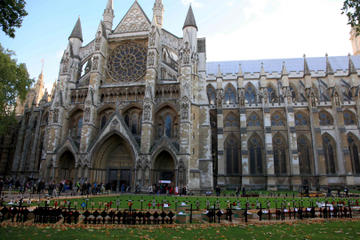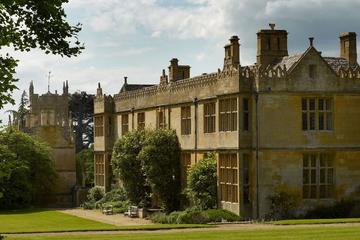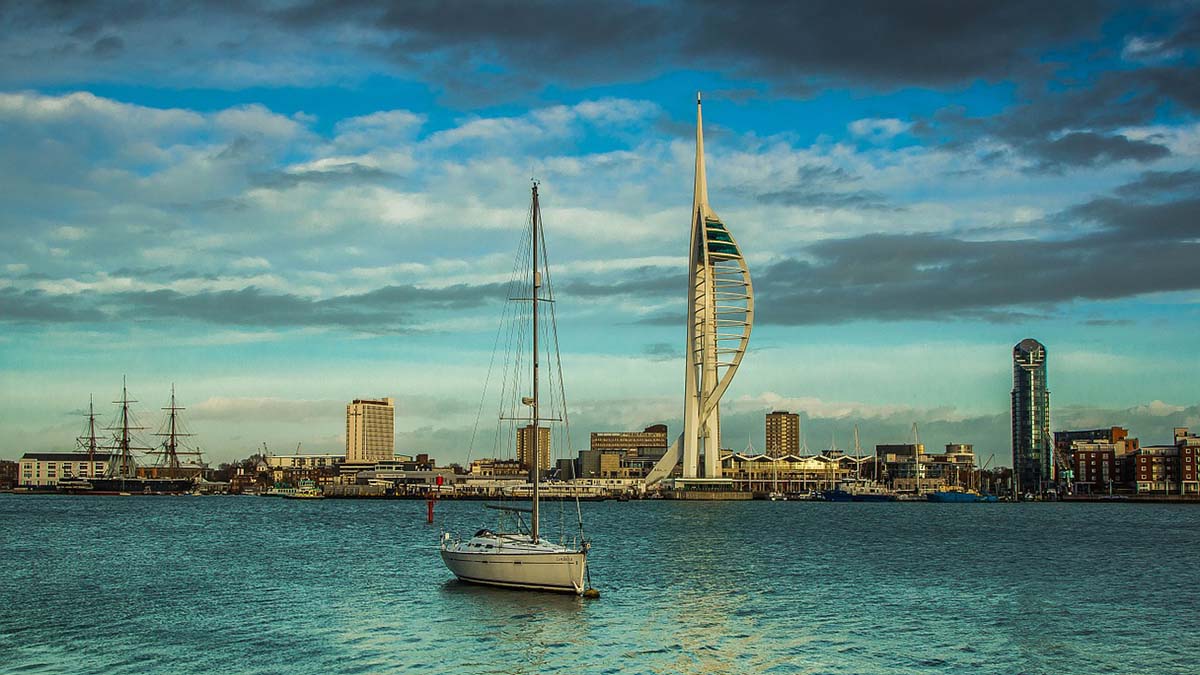
by Matthew Adams
The city of Portsmouth, on the south coast of England, is one that has a great coastline and harbor. As such, Portsmouth has plenty of boats! A variety of boats of various shapes and sizes, both modern and more historic, can be found at its harbor. As the city includes a Royal Navy naval base, which is one of the largest in Europe, it has a fascinating naval heritage.
I arrived in the city at the Portsmouth and Southsea train station for a stroll along the coast. Located at the waterfront is Portsmouth and Southsea station which is one of two train stations in Portsmouth. The other, further north, is Fratton Station which is an alternative departure point. The closest airport to Portsmouth is a relatively short train trip away at Southampton.
After exiting the train station, the first thing that cannot escape your attention is the HMS Warrior which dominates the harbor. The HMS Warrior is a 19th century battleship that was added to the Royal Navy’s fleets in 1860. This was Britain’s first iron-hulled, armored warship that was the largest and most advanced battleship of its time. Today it’s both a museum and monument of the city of Portsmouth.
To the right of the Portsmouth and Southsea station exit is the Hard Interchange. This is essentially a bus station and coach drop-off point. However, many of Portsmouth’s highlights are along the waterfront and well within walking distance.
A tourist information office is located just beyond the Hard Interchange, besides the Historic Dockyard’s entrance. It is here that the Millennium Promenade, or trail, begins. The Millennium Promenade is a three kilometer promenade which links Portsmouth’s historic waterfront. It stretches from the entrance of the Historic Dockyard to the Spur Redoubt at Clarence Pier. This is an ideal point to begin a stroll along the coast which is highlighted with a chain motif which runs along the path of the promenade.
The Historic Dockyard
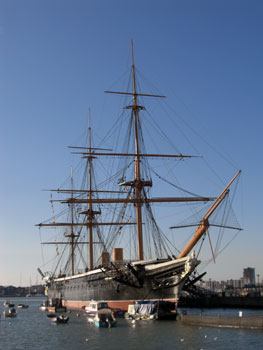 However, first I just had to drop in at the Historic Dockyard. It is here that a variety of naval museums are located such as the Royal Naval Museum and Mary Rose Museum. As mentioned the Historic Dockyard includes the HMS Warrior, which can also be considered a museum. Whilst you’ll need tickets for the ships, you can still enter the dockyard without tickets.
However, first I just had to drop in at the Historic Dockyard. It is here that a variety of naval museums are located such as the Royal Naval Museum and Mary Rose Museum. As mentioned the Historic Dockyard includes the HMS Warrior, which can also be considered a museum. Whilst you’ll need tickets for the ships, you can still enter the dockyard without tickets.
Its other famous ship is better hidden at the back of the Historic Dockyard. The HMS Victory is the other ship displayed at the Historic Dockyard which, at the time of writing, is undergoing renovations. This is an older warship than the HMS Warrior that was the flagship of Admiral Lord Nelson during the Napoleonic Wars. It was aboard this warship that Lord Nelson and his officers planned the Royal Navy’s victory at the Battle of Trafalgar.
Upon reaching the HMS Victory, you may notice more modern warships at the Royal Navy base. A 20th century camouflaged warship is also displayed next to the HMS Victory. This ship includes dazzled camouflage, and was introduced during World War One to disguise Royal Navy ships.
Gunwharf and the Spinnaker Tower
 After exiting the Historic Dockyard, the Millennium Promenade will take you to Gunwharf Quay right next to the train station. The Gunwharf shopping precinct is a more recent addition to Portsmouth that opened in 2001. It includes a bowlplex, cinema, Grosvenor Casino and a Holiday Inn Express hotel at the Gunwharf Quays Plaza which is ideal for any longer stay in Portsmouth.
After exiting the Historic Dockyard, the Millennium Promenade will take you to Gunwharf Quay right next to the train station. The Gunwharf shopping precinct is a more recent addition to Portsmouth that opened in 2001. It includes a bowlplex, cinema, Grosvenor Casino and a Holiday Inn Express hotel at the Gunwharf Quays Plaza which is ideal for any longer stay in Portsmouth.
Undoubtedly, the highlight of Gunwharf is the Spinnaker Tower which dominates the skyline of the Millennium Promenade. This has become a landmark tower of Portsmouth, and rises over 500 feet. The tower includes three platforms, the highest is the crow’s nest which has a wire-mesh roof. The Spinnaker Tower also includes the Café in the Clouds located on the second platform.
Beside the tower there is a small marina along the waterfront of Gunwharf. This includes a waterbus terminal from which you can take boat tours of Portsmouth’s harbor. The other waterbus terminal is located at the Historic Dockyard. These provide tours of the harbor with full commentary, and require no advance booking.
Portsmouth Old Town
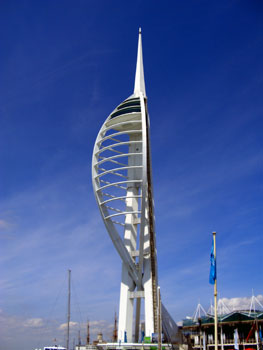 Modern Portsmouth soon gives way to Old Portsmouth along the Millennium Promenade which links Gunwharf with Portsmouth Old Town. This is where the trail gets interesting! After leaving Gunwharf, I reached the Renaissance Trail section of the Millennium Promenade. The Renaissance Trail passes through Portsmouth Old Town and ends at Clarence Pier.
Modern Portsmouth soon gives way to Old Portsmouth along the Millennium Promenade which links Gunwharf with Portsmouth Old Town. This is where the trail gets interesting! After leaving Gunwharf, I reached the Renaissance Trail section of the Millennium Promenade. The Renaissance Trail passes through Portsmouth Old Town and ends at Clarence Pier.
At Portsmouth Old Town there is the Camber which is a small harbor that dates back centuries. It was here that spices used to arrive in Portsmouth, as well as coal which remained a notable import up into the 20th century. Today smaller fishing vessels dominate the Camber.
There are also some great pubs scattered around the Camber. Portsmouth Old Town has up to nine pubs, which are ideal for a pint. Among them include The Bridge Tavern on the Camber, The Wellington and the Still and West.
The Round Tower is one of the old coastal fortifications that remain in Portsmouth Old Town. The roof of the tower is open to the public, and provides great views of the harbor. At the seaward end of the High Street in Portsmouth Old Town there is also the Square Tower, and between the two towers lies a stretch of seawall and cobbled shingle beach.
Portsmouth Old Town ends at the Spur Redoubt. Here there is Nelson’s Passage which links the Renaissance Trail with Southsea Common. Alternatively, you can continue along the trail which links to Clarence Esplanade.
Southsea Seafront
 Southsea Seafront begins at Clarence Esplanade, and the Victorian seafront continues for about four miles. At the esplanade I reached Clarence Pier and its fair that includes the small Skyward roller coaster, dodgems as well as miniature golf. However, the fair remains closed until March. Although the adjacent arcades are open, and they also include the Coffee Cup café and Wimpy Bar. The Premier Inn and Holiday Inn are two nearby hotels next to Clarence Pier which could be suitable accommodation for visitors.
Southsea Seafront begins at Clarence Esplanade, and the Victorian seafront continues for about four miles. At the esplanade I reached Clarence Pier and its fair that includes the small Skyward roller coaster, dodgems as well as miniature golf. However, the fair remains closed until March. Although the adjacent arcades are open, and they also include the Coffee Cup café and Wimpy Bar. The Premier Inn and Holiday Inn are two nearby hotels next to Clarence Pier which could be suitable accommodation for visitors.
On the right side of the Clarence Esplanade a stretch of open pebbled beach emerges from Clarence Pier up to Blue Reef Aquarium. To the left the esplanade is dominated by the grassy Southsea Common. Located halfway up the common is a large world war naval memorial with the dates of both world wars included on it. A smaller Crimean War monument also lies at the Blue Reef Aquarium’s entrance.
An ideal restaurant in Southsea is the Mozzarella Joes beach bar and grill. Located between the aquarium and Clarence Pier, this is the only restaurant on Southsea Beach. Mozzarella Joes cooks some famous grills such as sirloin steaks, rump steaks and BBQ ribs. Alternatively, gourmet burgers, stonebaked pizzas and seaside classics are also on the menu at this beachside restaurant.
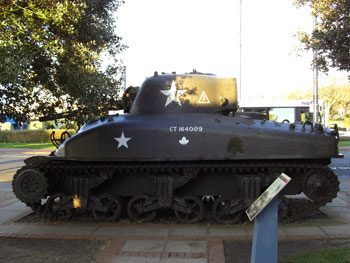 One of the highlights of the Southsea Seafront is perhaps the D-Day Museum at Castle Field. This is a museum that documents the 1944 D-Day landings in France. It includes the Operation Overlord embroidery which is an 83 meters long D-Day textile. Outside the museum an American Sherman tank and a British Churchill tank are also displayed.
One of the highlights of the Southsea Seafront is perhaps the D-Day Museum at Castle Field. This is a museum that documents the 1944 D-Day landings in France. It includes the Operation Overlord embroidery which is an 83 meters long D-Day textile. Outside the museum an American Sherman tank and a British Churchill tank are also displayed.
Behind the D–Day Museum you will also find Southsea Castle. This old coastal castle was constructed to guard the entrance to the Solent. It’s also open to visitors, with various old military armaments and artifacts displayed around the castle’s grounds.
Beyond Southsea Castle the common ends, but Southsea’s seafront does not. South Parade Pier is located on the largest stretch of Southsea Beach. Opposite the beach of Southsea Esplanade there is the Canoe Lake and Southsea Model Village.
A stroll along the coast of Portsmouth can cover a few miles. The Historic Waterfront and Southsea seafront dominate the southern coast of Portsmouth. With boats galore, award winning gardens, a beach and other highlights such as the Historic Dockyards and D–Day Museum Portsmouth is great city to visit.

HMS Victory, Mary Rose & Portsmouth Historic Dockyard – Private Tour From London
If You Go:
12 Top-Rated Tourist Attractions in Portsmouth
Travel Guide: Portsmouth
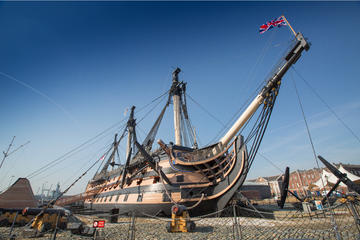
Portsmouth Historic Dockyard: The Eleven Attraction Ticket
About the author:
Matthew Adams is a freelancer that has produced a variety of articles for various publications and websites such as Swing Golf Magazine,TripAdvisor, Captured Snapshot, Coed Magazine the Washington Post and Vagabundo Travel. Matthew also has his own golf blog at: amateurgolfer.blogspot.co.uk.
All photos by Matthew Adams:
The HMS Warrior
Gunwharf and Spinnaker Tower
The Spinnaker Tower
The naval memorial at Southsea Common
The U.S. Sherman tank at Castle Field

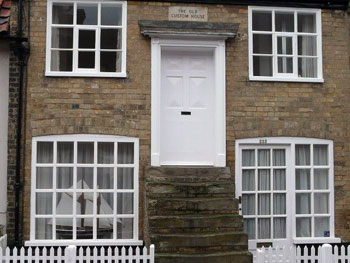
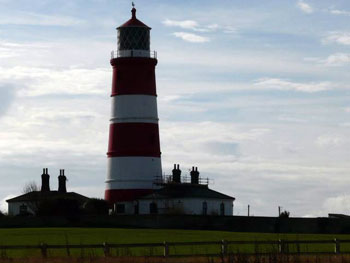 Up until the Middle Ages large tracts of East Anglia lay under water. Only the higher land was free from flooding. I could never understand why the cathedral town of Ely is referred to as an ‘isle.’ A hilly place surrounded by land and no water in sight, it certainly isn’t an island. But once you know the historical geography of East Anglia, it becomes clear. Slowly, slowly the wetlands, the lakes and water systems were drained and reclaimed from the sea. Since then, man and nature have been at war. In the main, man has won. Clever, he’s built dykes, installed pumps and constructed defences. But nature is a force to be reckoned with. Man has fought the sea, and the sea has, on occasion, won.
Up until the Middle Ages large tracts of East Anglia lay under water. Only the higher land was free from flooding. I could never understand why the cathedral town of Ely is referred to as an ‘isle.’ A hilly place surrounded by land and no water in sight, it certainly isn’t an island. But once you know the historical geography of East Anglia, it becomes clear. Slowly, slowly the wetlands, the lakes and water systems were drained and reclaimed from the sea. Since then, man and nature have been at war. In the main, man has won. Clever, he’s built dykes, installed pumps and constructed defences. But nature is a force to be reckoned with. Man has fought the sea, and the sea has, on occasion, won. Recently, I returned to East Anglia for an autumn break with my family. All the time I had lived there, I’d never visited the Norfolk Broads. The Broads are made up of rivers and lakes and wetlands. The area, rich in wildlife, is popular with visitors for boating, kayaking and canoeing as well as cycling. Between the wetlands, there are pretty villages wrapped in the folds of gently undulating countryside: thatched cottages, dwellings of flint or warm brick, traditional pubs and duck ponds.
Recently, I returned to East Anglia for an autumn break with my family. All the time I had lived there, I’d never visited the Norfolk Broads. The Broads are made up of rivers and lakes and wetlands. The area, rich in wildlife, is popular with visitors for boating, kayaking and canoeing as well as cycling. Between the wetlands, there are pretty villages wrapped in the folds of gently undulating countryside: thatched cottages, dwellings of flint or warm brick, traditional pubs and duck ponds. And so it was when we visited Aldeburgh on a cold, bright day in November. Fishing boats had been shored up on the pebbled beach; guest houses were winding down and closing up for winter; the beach was a place for a brisk walk, head down against the icy wind, coats pulled close around the neck. Dogs were allowed on the stony beach again.
And so it was when we visited Aldeburgh on a cold, bright day in November. Fishing boats had been shored up on the pebbled beach; guest houses were winding down and closing up for winter; the beach was a place for a brisk walk, head down against the icy wind, coats pulled close around the neck. Dogs were allowed on the stony beach again.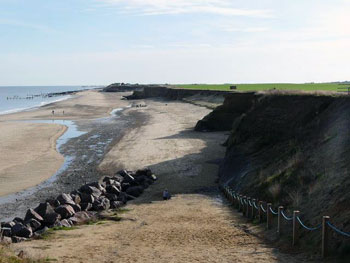 We stopped off at Sea Palling, another seaside resort devastated by the storm of 1953. The sea had breached and ripped through a section of the protecting sand dunes and carried away the Longshore Café. Several other homes, a bakery and a general store were smashed up too. Villagers clung to the roofs of their homes as the ocean engulfed them, waiting to be rescued. Seven people died and thousands of acres of land were destroyed. We sat in the café-cum-amusement arcade, drinking bitter coffee and reading the faded newspaper cuttings adorning the wall. It made for sobering reading among the duke-box pop and random slot machine sounds.
We stopped off at Sea Palling, another seaside resort devastated by the storm of 1953. The sea had breached and ripped through a section of the protecting sand dunes and carried away the Longshore Café. Several other homes, a bakery and a general store were smashed up too. Villagers clung to the roofs of their homes as the ocean engulfed them, waiting to be rescued. Seven people died and thousands of acres of land were destroyed. We sat in the café-cum-amusement arcade, drinking bitter coffee and reading the faded newspaper cuttings adorning the wall. It made for sobering reading among the duke-box pop and random slot machine sounds.
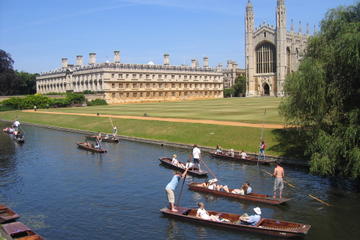
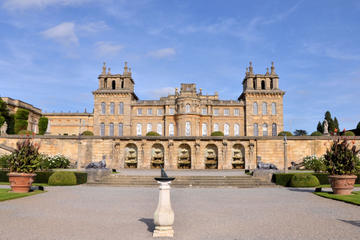

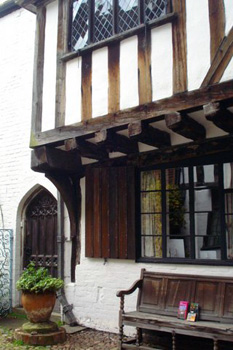 The picturesque city of Worcester in Worcestershire, the West Midlands of England, is a modern city with a fascinating past. From its early begins as a Roman fort on the River Severn in the first century, down through the ages Worcester has been noted as an important centre of British history, known as ‘the place where Liberty was fought’.
The picturesque city of Worcester in Worcestershire, the West Midlands of England, is a modern city with a fascinating past. From its early begins as a Roman fort on the River Severn in the first century, down through the ages Worcester has been noted as an important centre of British history, known as ‘the place where Liberty was fought’.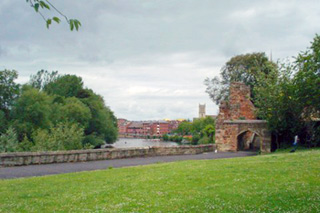 I’ve visited Worcester on several occasions and always enjoy touring around the town. It’s a fairly easy walk to see most of the sights. The city still retains many historical buildings. The Greyfriars, a merchant’s house on Friar Street, is a beautiful timber panel house dating from 1480. The gracious Queen Anne style Guild Hall on High Street was designed by Thomas White, a student of Christopher Wren. There are some exhibits inside. And at the Commandery, which has functioned as everything from a hospital to a military headquarters for King Charles, you can take an audio tour focusing on the Civil War history. On one of my visit to Worcester I went to the Royal Worcester Porcelain museum where I purchased some samples of this fine china. Worcester is also the home of the Lea and Perrins factory where traditional Worcestershire Sauce is made. Be sure and stop at one city’s of the very old Tudor-style pubs to refresh yourself!
I’ve visited Worcester on several occasions and always enjoy touring around the town. It’s a fairly easy walk to see most of the sights. The city still retains many historical buildings. The Greyfriars, a merchant’s house on Friar Street, is a beautiful timber panel house dating from 1480. The gracious Queen Anne style Guild Hall on High Street was designed by Thomas White, a student of Christopher Wren. There are some exhibits inside. And at the Commandery, which has functioned as everything from a hospital to a military headquarters for King Charles, you can take an audio tour focusing on the Civil War history. On one of my visit to Worcester I went to the Royal Worcester Porcelain museum where I purchased some samples of this fine china. Worcester is also the home of the Lea and Perrins factory where traditional Worcestershire Sauce is made. Be sure and stop at one city’s of the very old Tudor-style pubs to refresh yourself!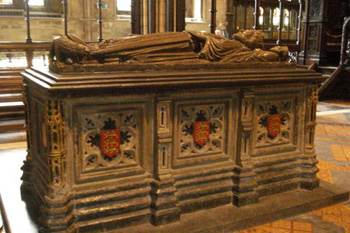 The grandest architectural landmark in Worcester is the imposing Worcester Cathedral which had its beginnings in 1084. Located on the banks of the River Severn, its spires dominate the skyline of the city. The mediaeval cloisters of the cathedral are among the most remarkable in England. The cathedral has the distinction of having the tomb of King John who is most famous for agreeing to the Magna Carta. During his reign from 1199, he controlled an empire that stretched from the south of France through regions of England, Wales and Ireland. When he died in 1216, he requested to be buried at Worcester. The cathedral also has a memorial to Prince Arthur, the young prince Arthur Tudor whose younger brother was Henry VIII. Because of his chancery in the cathedral, Worcester was spared destruction by Henry during the English Reformation.
The grandest architectural landmark in Worcester is the imposing Worcester Cathedral which had its beginnings in 1084. Located on the banks of the River Severn, its spires dominate the skyline of the city. The mediaeval cloisters of the cathedral are among the most remarkable in England. The cathedral has the distinction of having the tomb of King John who is most famous for agreeing to the Magna Carta. During his reign from 1199, he controlled an empire that stretched from the south of France through regions of England, Wales and Ireland. When he died in 1216, he requested to be buried at Worcester. The cathedral also has a memorial to Prince Arthur, the young prince Arthur Tudor whose younger brother was Henry VIII. Because of his chancery in the cathedral, Worcester was spared destruction by Henry during the English Reformation.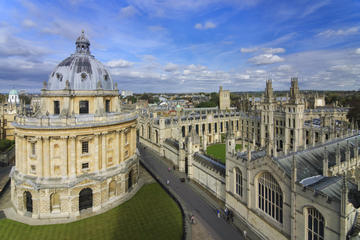

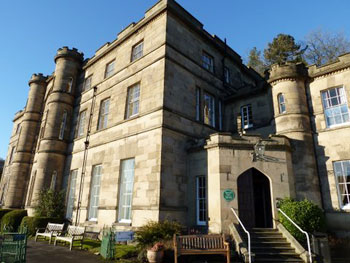
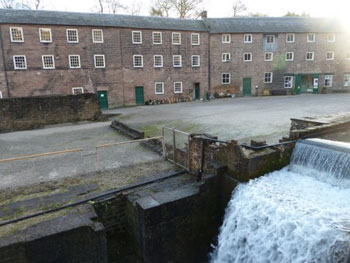 Arkwright was born into the world in 1732. When his mother looked upon her new-born child, it’s unlikely she thought, “My son’s going to change the face of Britain forever,” but this is exactly what Richard Arkwright did. Because of him, the countless small-scale cottage industries that criss-crossed the British countryside largely disappeared to be replaced by huge factories that sprang up in villages, towns and cities across the land.
Arkwright was born into the world in 1732. When his mother looked upon her new-born child, it’s unlikely she thought, “My son’s going to change the face of Britain forever,” but this is exactly what Richard Arkwright did. Because of him, the countless small-scale cottage industries that criss-crossed the British countryside largely disappeared to be replaced by huge factories that sprang up in villages, towns and cities across the land. Arkwright: opportunist, designer, engineer, entrepreneur, ruthless negotiator, business magpie and self-made man, developed among other things: the spinning frame, the water frame and carding engine. He established the great mills that still line Britain’s waterways. And although some mills existed before Arkwright came to the fore, it was Arkwright who created the modern factory – a hundred years before Henry Ford was born. He is the father of the Industrial Revolution.
Arkwright: opportunist, designer, engineer, entrepreneur, ruthless negotiator, business magpie and self-made man, developed among other things: the spinning frame, the water frame and carding engine. He established the great mills that still line Britain’s waterways. And although some mills existed before Arkwright came to the fore, it was Arkwright who created the modern factory – a hundred years before Henry Ford was born. He is the father of the Industrial Revolution.
 His employees were fiercely loyal to Arkwright. After all he provided them with money, homes, even a week’s holiday (as long as they didn’t leave the village). He also refused to employ children under the age of seven. But he was a strict and fearsome autocrat; a man of his times.
His employees were fiercely loyal to Arkwright. After all he provided them with money, homes, even a week’s holiday (as long as they didn’t leave the village). He also refused to employ children under the age of seven. But he was a strict and fearsome autocrat; a man of his times. Across the valley from Masson Mill (now a shopping outlet housing a small Arkwright museum), you can see Willersley Castle. Arkwright tiring of the gloomy Rock house situated in a narrow, shady valley, bought a large tract of land from Florence Nightingale’s family and set out to build an elegant mansion on the sunny side of the valley. However, as luck would have it, the house burnt down on completion and Arkwright had to wait a further two years before the rebuilt house was complete. But fate was to conspire against him and poor Arkwright died before he could ever move in.
Across the valley from Masson Mill (now a shopping outlet housing a small Arkwright museum), you can see Willersley Castle. Arkwright tiring of the gloomy Rock house situated in a narrow, shady valley, bought a large tract of land from Florence Nightingale’s family and set out to build an elegant mansion on the sunny side of the valley. However, as luck would have it, the house burnt down on completion and Arkwright had to wait a further two years before the rebuilt house was complete. But fate was to conspire against him and poor Arkwright died before he could ever move in. Few venture here, yet it’s a place of strange decaying beauty. The first mill was built here in the 1600s. By the height of the Industrial Revolution, there were at least seven mills crammed into this narrow dale. Arkwright, of course, was at the centre of Lumsdale’s expansion.
Few venture here, yet it’s a place of strange decaying beauty. The first mill was built here in the 1600s. By the height of the Industrial Revolution, there were at least seven mills crammed into this narrow dale. Arkwright, of course, was at the centre of Lumsdale’s expansion.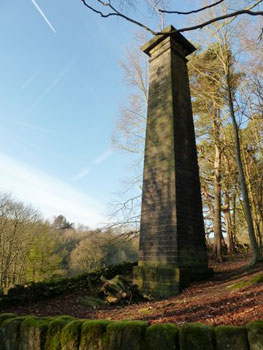 Climbing high above the dale, I look down at the waterfall that spills a hundred feet. Transparent pebbles of water bounce into the air. Below, the stream is bracken-brown. At the water’s edge, great green and russet slabs of stone sculpt the valley, like heavy, angular communist monuments.
Climbing high above the dale, I look down at the waterfall that spills a hundred feet. Transparent pebbles of water bounce into the air. Below, the stream is bracken-brown. At the water’s edge, great green and russet slabs of stone sculpt the valley, like heavy, angular communist monuments.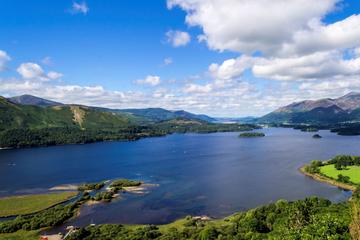
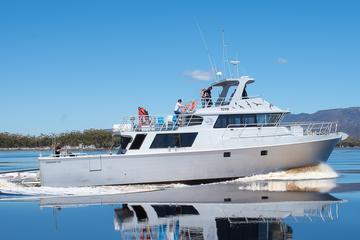
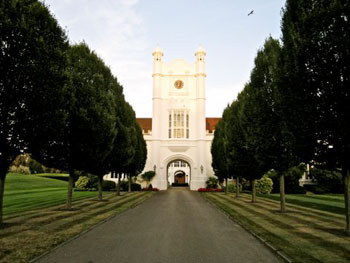
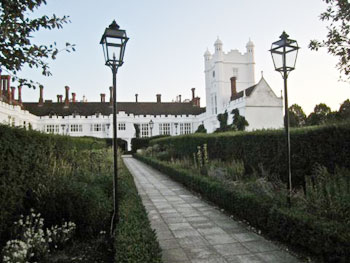 We are a bit early and have a chance to amble round the gardens. Pebble pathways weave like a labyrinth through trimmed hedges in varying shades of green. A fountain sits in the center with a cherub standing on top and the soft sound of trickling water. We watch a bride and groom looking out over the cliff, down to the River Thames. His arm wraps around her slender waist over the buttons elegantly running down the back of her lace dress. Their guests photograph them as they laugh and kiss in the late afternoon sun.
We are a bit early and have a chance to amble round the gardens. Pebble pathways weave like a labyrinth through trimmed hedges in varying shades of green. A fountain sits in the center with a cherub standing on top and the soft sound of trickling water. We watch a bride and groom looking out over the cliff, down to the River Thames. His arm wraps around her slender waist over the buttons elegantly running down the back of her lace dress. Their guests photograph them as they laugh and kiss in the late afternoon sun.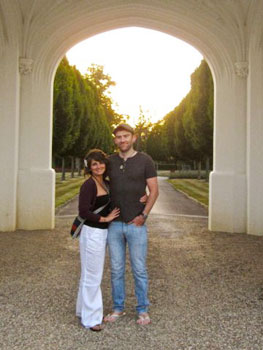 We sit back in our sleek armchairs and people watch through the windows. Our separate teapots arrive along with sugar cubes and milk in a sterling silver pitcher. I lift my teapot and pour it into my cup. The tealeaves come pouring out with it. I look over the table at Stonie, sheepishly, and see that he has made the same mistake.
We sit back in our sleek armchairs and people watch through the windows. Our separate teapots arrive along with sugar cubes and milk in a sterling silver pitcher. I lift my teapot and pour it into my cup. The tealeaves come pouring out with it. I look over the table at Stonie, sheepishly, and see that he has made the same mistake.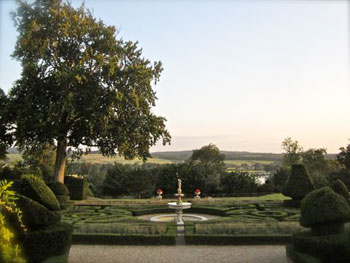 We start on the sandwiches. They’re thinly spread with different fillings, like hummus, roast beef, and egg mayo. Frankly, I am not impressed. They’re made with commercially packaged bread, crusts are cut off and only about 1/3 of the slice is used. I wonder what they do with the rest of the sandwich. If I’m going to pay £21 for sandwiches, I would like fresh bakery-worthy bread, not the Wonder bread my mom used for bologna sandwiches in my school sack lunch. However, this is traditional afternoon tea, and that’s the way the sandwiches are made. Besides, I’m hungry.
We start on the sandwiches. They’re thinly spread with different fillings, like hummus, roast beef, and egg mayo. Frankly, I am not impressed. They’re made with commercially packaged bread, crusts are cut off and only about 1/3 of the slice is used. I wonder what they do with the rest of the sandwich. If I’m going to pay £21 for sandwiches, I would like fresh bakery-worthy bread, not the Wonder bread my mom used for bologna sandwiches in my school sack lunch. However, this is traditional afternoon tea, and that’s the way the sandwiches are made. Besides, I’m hungry.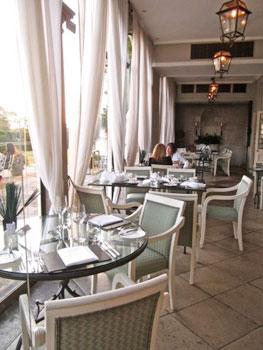 I cut a raisin scone in half and spread the jam first, then the cream. It’s so thick, I use my finger to scrape it off the spoon and lick my finger clean. Not the best manners, I’m aware, but we’ve already broken so many other rules of etiquette.
I cut a raisin scone in half and spread the jam first, then the cream. It’s so thick, I use my finger to scrape it off the spoon and lick my finger clean. Not the best manners, I’m aware, but we’ve already broken so many other rules of etiquette.
